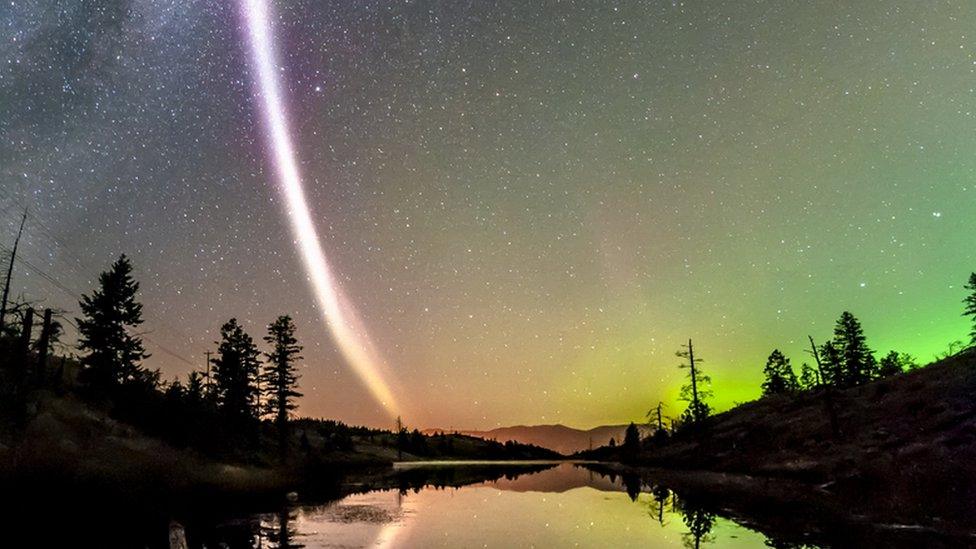Aurora photographers find new night sky lights and call them Steve
- Published

A group of aurora enthusiasts have found a new type of light in the night sky and named it Steve.
Eric Donovan from the University of Calgary in Canada spotted the feature in photos shared on a Facebook group.
He did not recognise it as a catalogued phenomenon and although the group were calling it a proton arc, he knew proton auroras were not visible.
Testing showed it appeared to be a hot stream of fast-flowing gas in the higher reaches of the atmosphere.
The European Space Agency (ESA) sent electric field instruments to measure it 300km (190 miles) above the surface of the Earth and found the temperature of the air was 3,000C (5,400F) hotter inside the gas stream than outside it.
Inside, the 25km-wide ribbon of gas was flowing at 6 km/s (13,000mph), 600 times faster than the air on either side.
Relatively little else is known about the big purple light as yet but it appears it is not an aurora as it does not stem from the interaction of solar particles with the Earth's magnetic field.
There are reports that the group called it Steve in homage to a 2006 children's film, Over the Hedge, where the characters give the name to a creature they have not seen before.
Roger Haagmans of the ESA said: "It is amazing how a beautiful natural phenomenon, seen by observant citizens, can trigger scientists' curiosity.
"It turns out that Steve is actually remarkably common, but we hadn't noticed it before. "It's thanks to ground-based observations, satellites, today's explosion of access to data and an army of citizen scientists joining forces to document it."
Commenters in the original Facebook group joked about the name, with one person coming up with a scientific-sounding acronym for Steve